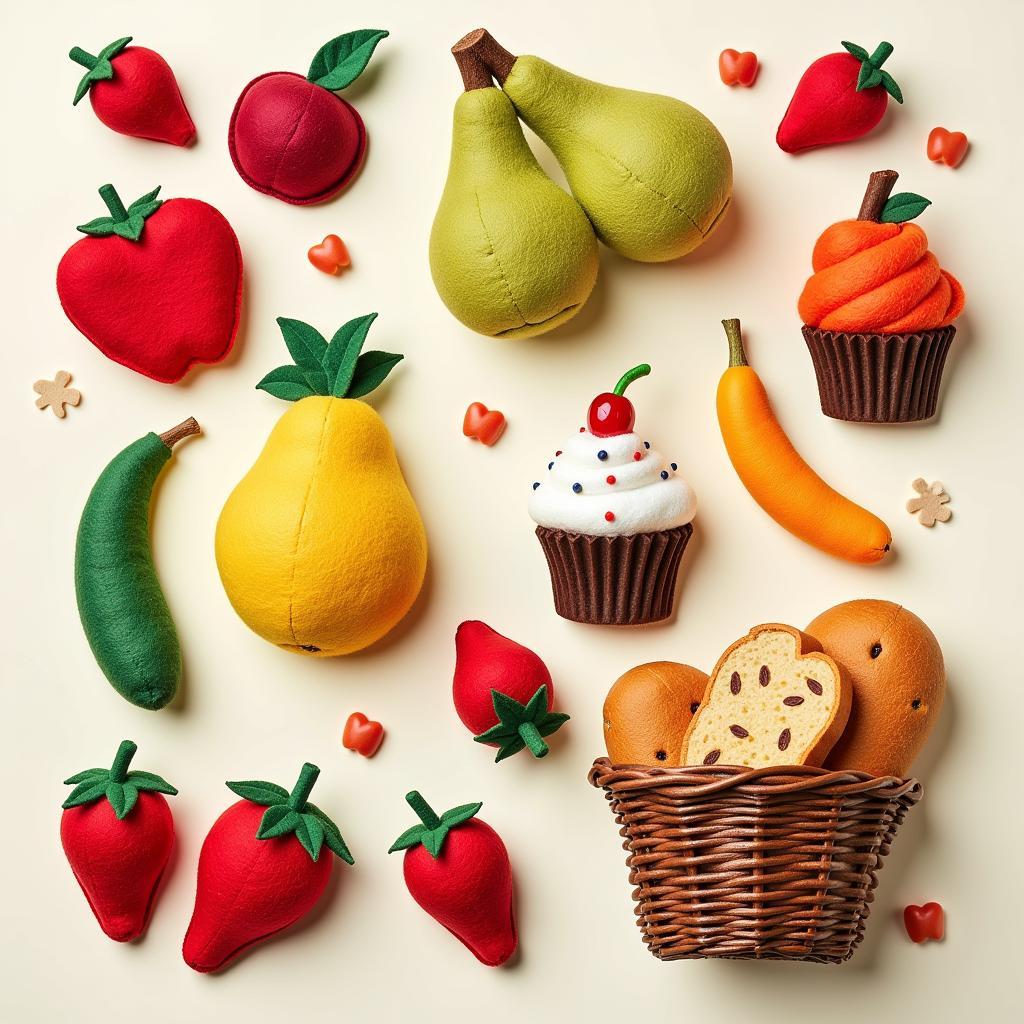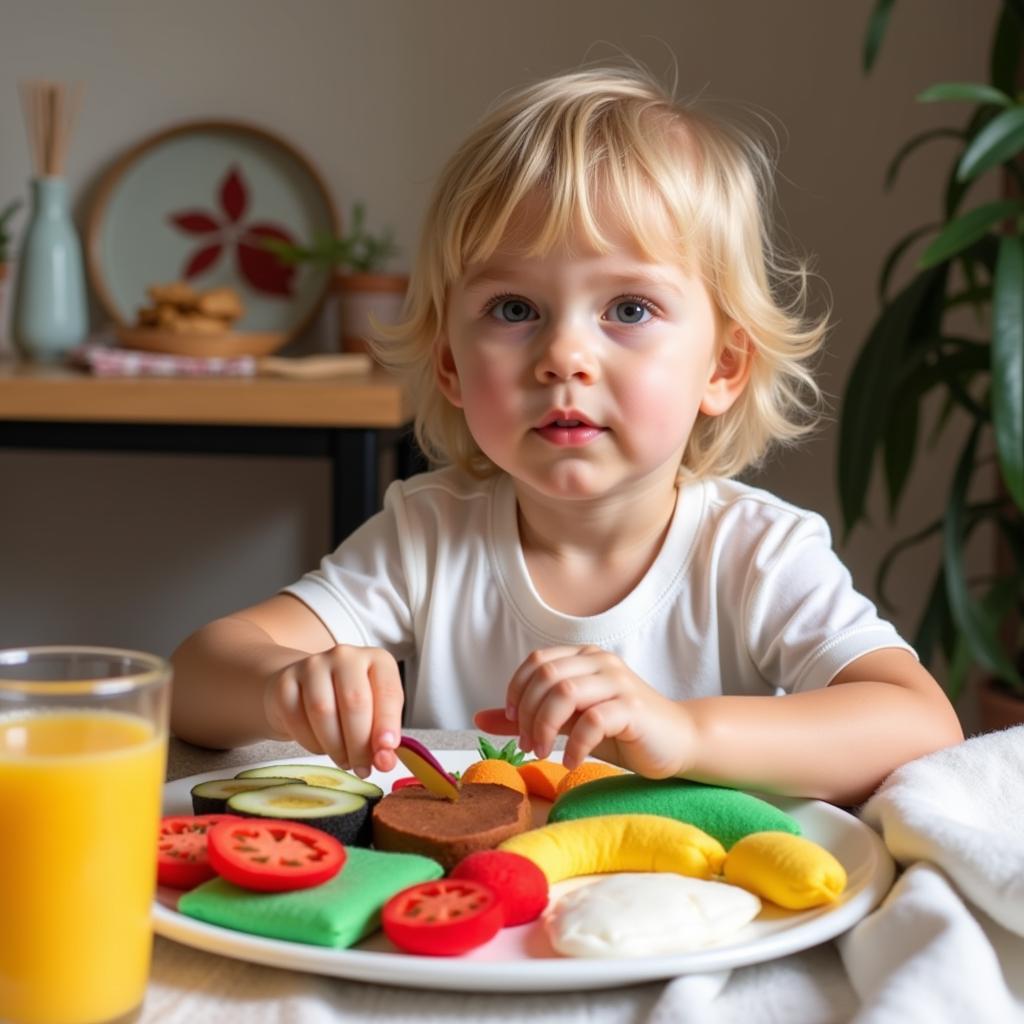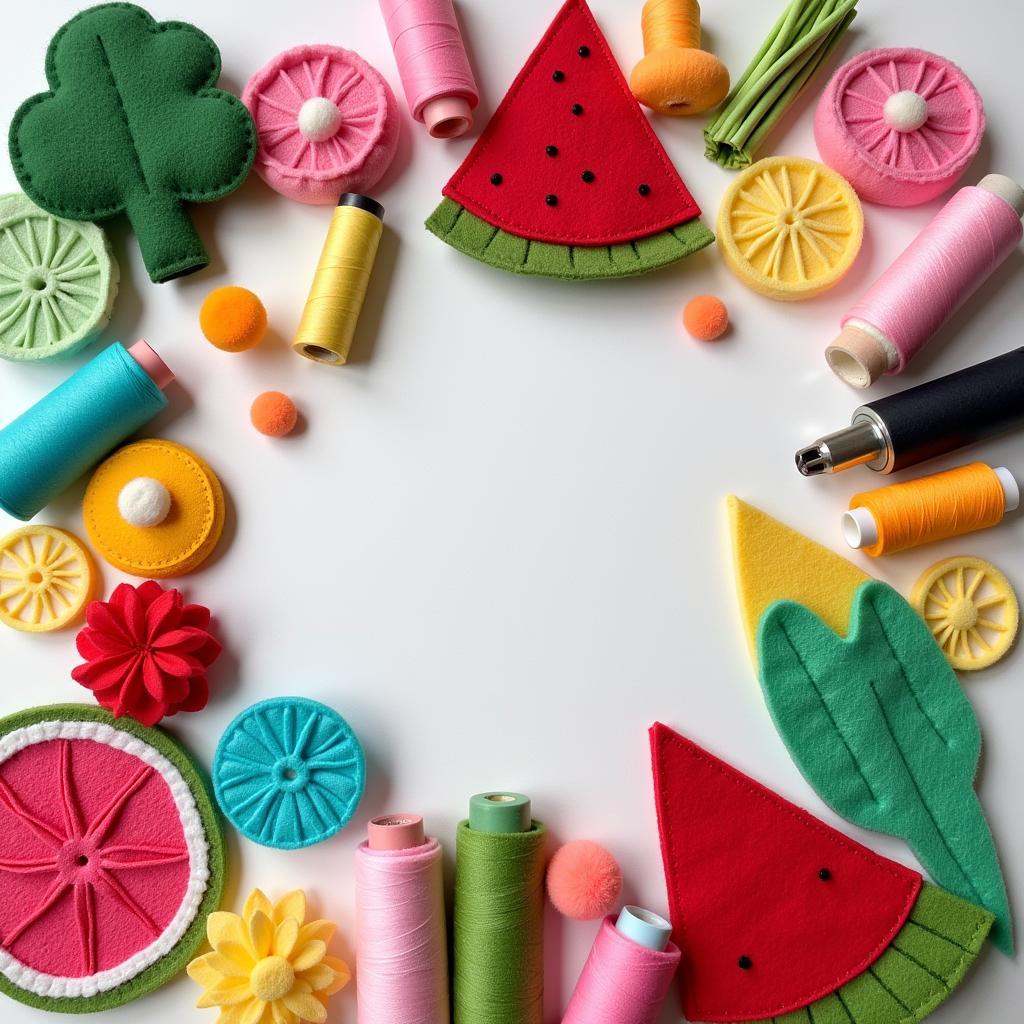The term “Fabric Food” might seem strange at first glance. After all, food is meant to be eaten, not sewn! However, delve a little deeper, and you’ll discover a fascinating realm where culinary arts and textile crafts intertwine. From playful pretend food for children to realistic displays for food photography, fabric food encompasses a diverse range of creations and purposes.
Beyond the Plate: What is Fabric Food?
 Fabric Food Examples
Fabric Food Examples
Fabric food, simply put, is the art of crafting realistic food replicas using textiles. Think plush tomatoes, felt cookies, or even crocheted sushi! These creations are not meant to be eaten but serve various practical and aesthetic purposes.
The Allure of Fabric Food: Why We Love It
 Child Playing with Fabric Food
Child Playing with Fabric Food
The charm of fabric food lies in its versatility and longevity. Unlike real food, it won’t spoil, making it ideal for:
- Children’s Play Food: Fabric food provides a safe and durable alternative to plastic toys, encouraging imaginative play and fine motor skills development.
- Educational Tools: From teaching about different food groups to demonstrating culinary techniques, fabric food offers hands-on learning experiences.
- Home Decor: Fabric food can add a whimsical touch to kitchens and dining areas, creating a warm and inviting ambiance.
- Photography Props: For food bloggers and photographers, fabric food provides realistic-looking stand-ins, eliminating the time constraints of working with perishable ingredients.
A Feast for the Senses: Exploring Different Types of Fabric Food
The world of fabric food is as diverse as the culinary world itself. Here are some popular examples:
- Felt Food: Felt, with its versatility and ease of manipulation, is a favorite for creating everything from simple fruits and vegetables to intricate desserts.
- Fabric Scrap Food: Give new life to fabric scraps by transforming them into unique and charming food creations, adding a touch of sustainability to your craft.
- Crocheted and Knitted Food: For those who love yarn crafts, crocheting and knitting offer endless possibilities, from delicate pastries to hearty loaves of bread.
- Sewn Food Plushies: Plush fabric and soft stuffing create adorable food plushies, perfect for cuddling or adding a playful touch to home decor.
Crafting Your Culinary Masterpiece: Getting Started with Fabric Food
 Fabric Food Making Supplies
Fabric Food Making Supplies
Ready to try your hand at creating your own fabric food? Here’s what you need to get started:
- Choose Your Materials: Felt, cotton fabrics, yarn, and felt are popular choices for fabric food.
- Gather Your Tools: Basic sewing supplies like needles, thread, scissors, and stuffing are essential.
- Find Inspiration: Explore online resources, craft books, and felt food free patterns to spark your creativity.
- Start Simple: Begin with basic shapes and gradually work your way up to more complex designs.
Fabric Food: A Sustainable Choice for a Greener Future
In a world increasingly conscious of its environmental impact, fabric food offers a sustainable alternative to plastic toys and disposable props. By using eco-friendly materials and embracing upcycling techniques, fabric food enthusiasts can indulge in their craft while minimizing their ecological footprint.
Fabric Food: Beyond the Play Kitchen
While fabric food holds a special place in children’s play kitchens, its applications extend far beyond. Chefs and culinary schools utilize fabric food models for presentations and training. Food stylists rely on them for elaborate food displays, and photographers capture their timeless appeal in stunning visuals.
The Future of Food: Is “Next Gen Food” on the Menu?
 Futuristic Food Technology
Futuristic Food Technology
As technology advances, we’re seeing a rise in innovative food solutions like lab-grown meat and 3D-printed meals. Could this “next gen food” inspire a new wave of fabric food creations? The possibilities are as limitless as our imagination!
Conclusion
From playful pretend food to sophisticated props and beyond, fabric food offers a unique blend of creativity and practicality. Whether you’re a seasoned crafter or a curious beginner, the world of fabric food welcomes you to explore its endless possibilities. So gather your materials, unleash your imagination, and whip up some delightful and enduring fabric food creations!
FAQs
1. Is fabric food safe for babies and toddlers?
While fabric food is generally safe, it’s crucial to choose age-appropriate designs and materials. Avoid small parts that could pose a choking hazard and always supervise young children during playtime.
2. Where can I find patterns and tutorials for making fabric food?
Numerous online resources, craft blogs, and even Etsy shops offer a wide array of free and paid fabric food patterns and tutorials.
3. Can I wash fabric food?
The washability of fabric food depends on the materials and construction. Spot cleaning is generally recommended, but some items might be hand-washed or machine-washed on a gentle cycle.
4. What are some creative ways to display fabric food?
Fabric food can be displayed in baskets, bowls, on tiered stands, or incorporated into play kitchens. You can also create charming vignettes by arranging them on shelves or in shadow boxes.
5. Can I sell the fabric food I make?
Yes, many crafters sell their handmade fabric food creations online through platforms like Etsy or at craft fairs and markets.
Have other questions or need assistance?
Feel free to reach out to us at Phone Number: 02437655121, Email: minacones@gmail.com, or visit us at 3PGH+8R9, ĐT70A, thôn Trung, Bắc Từ Liêm, Hà Nội, Việt Nam. Our customer support team is available 24/7 to assist you.
Explore more about the fascinating world of food and crafts on our website:
- Discover unique food print fabric for your next sewing project.
- Find the perfect toddler play food to inspire imaginative play.
- Learn about the latest advancements in next-gen food and its potential impact on our culinary landscape.
- Check out our delicious offerings at the food truck homestead fl for a taste of something special.